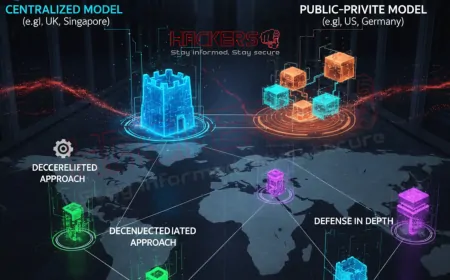How Do 5G and IoT Together Create New Security Challenges?
Imagine a world where your car talks to traffic lights to avoid red signals, your doctor checks your heart in real time from miles away, and factories adjust production instantly based on global demand. This isn’t science fiction. It’s the promise of 5G and IoT working together. 5G is the super-fast, low-delay wireless network rolling out worldwide. IoT is the army of connected devices, from smart thermostats to industrial sensors. Together, they unlock amazing possibilities. But here’s the catch: more connections mean more doors for hackers to knock on. A single weak link in a 5G-powered IoT system could crash a city’s power grid, steal millions of health records, or spy on your home. In this blog post, we’ll break down how 5G and IoT amplify each other’s strengths, and unfortunately, their security risks too. We’ll explain the new challenges in simple terms and show how businesses, cities, and even homeowners can stay safe. Let’s dive in.

Table of Contents
- What Are 5G and IoT, and Why Do They Work So Well Together?
- The Powerful Benefits of 5G-Powered IoT
- 8 Major Security Challenges Created by 5G and IoT
- How 5G Expands the Attack Surface for IoT
- Real-World Examples of 5G-IoT Security Risks
- Comparison of Security Risks: 4G vs. 5G IoT
- Practical Solutions to Secure 5G-IoT Systems
- The Future: Evolving Threats and Defenses
- Conclusion: Balance Speed with Security
- Frequently Asked Questions
What Are 5G and IoT, and Why Do They Work So Well Together?
Let’s start with the basics. IoT, or Internet of Things, is any device that connects to the internet to send or receive data. Think smartwatches, security cameras, or factory robots. 5G is the fifth generation of mobile networks. It’s up to 100 times faster than 4G, with near-zero delay (latency) and the ability to connect millions of devices in a small area.
Why do they pair so well? Older networks like 4G couldn’t handle thousands of devices talking at once. A smart city with traffic sensors, drones, and connected buses would choke on 4G. 5G changes that. It supports massive device density, ultra-reliable communication, and splits the network into virtual slices for different uses, like one slice for emergency services and another for streaming video.
This combo powers:
- Self-driving cars that react in milliseconds
- Remote surgeries with robotic arms
- Smart grids that balance energy in real time
But speed and scale come with a price: new security headaches.
The Powerful Benefits of 5G-Powered IoT
Before we talk risks, let’s celebrate the wins. 5G makes IoT truly useful:
- Real-Time Control: A factory robot gets instant feedback to avoid collisions.
- Millions of Devices: One 5G tower can connect an entire stadium of wearables.
- Network Slicing: Isolate critical systems, like hospital equipment, from public traffic.
- Edge Computing: Process data near the device, reducing cloud dependency and delay.
- Energy Efficiency: Devices sleep longer between checks, saving battery.
These features open doors to innovation. But every door is a potential entry for attackers.
8 Major Security Challenges Created by 5G and IoT
Combining 5G and IoT doesn’t just multiply risks. It creates entirely new ones. Here are the biggest:
- Massive Attack Surface: Billions more devices mean billions more targets.
- Distributed Denial of Service (DDoS) on Steroids: 5G’s speed lets botnets flood targets faster.
- Network Slicing Vulnerabilities: A breach in one slice could jump to others if not isolated properly.
- Supply Chain Complexity: 5G involves more vendors, chips, and software, increasing weak links.
- Edge Node Attacks: Data processed at the edge (near devices) is harder to monitor centrally.
- Legacy IoT on 5G: Old, unpatchable devices now have high-speed internet access.
- Privacy at Scale: More data, collected faster, from more places, raises surveillance risks.
- Zero-Day Exploits in New Tech: 5G is young. Unknown flaws will be found and abused.
Think of it like upgrading from a small house to a skyscraper. More rooms, more windows, more ways in.
Key Insight: 5G doesn’t make IoT less secure by itself. But its power amplifies the impact of any security failure.
How 5G Expands the Attack Surface for IoT
In security, "attack surface" means all the places a hacker could break in. 5G blows this wide open:
- More Entry Points: Every 5G small cell (mini tower) is a potential target. Cities may have thousands.
- Virtualized Networks: 5G uses software to manage hardware. A bug in the software affects the whole system.
- API Exposure: 5G relies on APIs (application programming interfaces) to connect services. Poorly secured APIs are hacker favorites.
- User Equipment Risks: Phones, routers, and IoT gateways on 5G can be hijacked to spy or attack.
- International Supply Chains: 5G gear comes from global vendors. Backdoors or flaws in one chip spread fast.
A single compromised 5G base station could disrupt an entire neighborhood’s IoT devices, from smart locks to medical alerts.
Real-World Examples of 5G-IoT Security Risks
While 5G is still rolling out, early incidents show the danger:
Case 1: 5G-Powered Drone Hack (2023)
Researchers hijacked a 5G-connected delivery drone mid-flight. They exploited weak authentication in the control API. The drone was rerouted to drop its package in a lake. The fix? Stronger encryption and device certificates.
Case 2: Smart Factory Outage (2024)
A European car plant lost 12 hours of production after a 5G network slice was flooded with fake traffic. Attackers used compromised IoT sensors to amplify the DDoS attack. Cost: €3 million.
Case 3: Health Monitor Spoofing (2025)
Hackers sent fake heart rate data from a 5G wearable to a hospital system. Doctors rushed a healthy patient to surgery. The device used outdated firmware with no 5G-grade security.
These aren’t hypotheticals. They’re warnings.
Comparison of Security Risks: 4G vs. 5G IoT
How does 5G change the game? Here’s a clear comparison:
| Risk Factor | 4G IoT | 5G IoT | Why It Matters |
|---|---|---|---|
| Device Density | Hundreds per tower | Millions per sq km | More devices = more targets |
| Attack Speed | Up to 100 Mbps | Up to 20 Gbps | Faster floods crash systems quicker |
| Network Slicing | Not available | Multiple virtual networks | One breach can affect critical slices |
| Edge Computing | Limited | Widespread | More distributed points to secure |
5G isn’t less secure than 4G. It’s more complex, and complexity breeds risk.
Practical Solutions to Secure 5G-IoT Systems
Good news: we’re not defenseless. Here’s how to fight back:
- End-to-End Encryption: Encrypt data from device to cloud. Use TLS 1.3 and strong keys.
- Device Identity: Give every IoT device a unique digital certificate. No certificate, no connection.
- Network Slicing Isolation: Keep public, private, and critical traffic in separate, firewalled slices.
- AI-Powered Monitoring: Use machine learning to spot odd behavior, like a sensor sending data at 3 a.m.
- Zero-Trust Architecture: Verify every device, user, and packet, every time.
- Secure Boot and Updates: Only allow signed firmware. Push updates over secure 5G channels.
- Edge Security: Run firewalls and intrusion detection on edge nodes, not just the core.
- Vendor Risk Management: Audit 5G and IoT suppliers. Demand security certifications like NESAS.
Cities like Singapore and companies like Verizon are already using these. You can too.
The Future: Evolving Threats and Defenses
5G is just the beginning. 6G is in research, promising even more speed and AI-native networks. Threats will evolve:
- Quantum attacks that break today’s encryption
- AI-generated deepfake commands to IoT devices
- Swarm attacks using millions of micro-drones
Defenses will evolve too:
- Post-quantum cryptography
- Blockchain for device identity
- Autonomous security agents that self-heal networks
The key? Build security in from day one. Standards like 3GPP Release 17 and ETSI ENI are helping.
Conclusion: Balance Speed with Security
5G and IoT are a dream team. They bring real-time intelligence to cities, factories, homes, and healthcare. But speed without safety is reckless. The same features that make 5G powerful, massive connectivity, low latency, network slicing, also create new security challenges. More devices, faster attacks, complex software, and global supply chains mean risks are bigger and harder to see. But we’re not powerless. Encryption, zero-trust, AI monitoring, and secure design can lock the doors. Governments, telecoms, manufacturers, and users must work together. The future of connected life depends on it. 5G and IoT will change the world. Let’s make sure they change it for the better, and safer.
Frequently Asked Questions
What is 5G and how is it different from 4G?
5G is the latest mobile network. It’s much faster, has near-zero delay, and can connect millions of devices at once, unlike 4G.
Why does 5G make IoT more powerful?
It supports real-time communication, massive device numbers, and network slicing for reliable, isolated connections.
Does 5G itself have security flaws?
No, but its complexity and new features create more places for mistakes or attacks if not secured properly.
What is network slicing in 5G?
It creates virtual networks on the same physical 5G system. One slice for hospitals, another for video streaming, etc.
Can a hacked IoT device crash a 5G network?
Yes. Thousands of compromised devices can flood the network with traffic, causing outages.
Is 5G safe for health devices like pacemakers?
Only if properly secured. Use encryption, strong identity, and isolated network slices.
What is an attack surface?
All the points where a hacker could try to break in. 5G and IoT make this surface much larger.
Can 5G amplify DDoS attacks?
Yes. Its high speed lets botnets send overwhelming traffic much faster than 4G.
What is zero-trust in 5G-IoT?
Never trust any device or user. Verify identity and permissions every time, everywhere.
Are private 5G networks safer?
Yes. They’re dedicated to one organization, with full control over security and traffic.
Do I need new IoT devices for 5G?
Not always. Many 4G devices work on 5G, but new ones are built with 5G security in mind.
How can I secure my 5G router at home?
Change default password, enable WPA3, disable remote access, and keep firmware updated.
Who is responsible for 5G-IoT security?
Everyone: network providers, device makers, app developers, and users.
Can AI help secure 5G-IoT?
Yes. It detects unusual traffic, predicts attacks, and automates responses in real time.
Will 5G make my smart home less private?
Only if unencrypted. Use devices with end-to-end encryption and secure protocols.
What is edge computing in 5G?
Processing data near the device, not in the cloud. Faster, but needs local security.
Are there laws for 5G-IoT security?
Yes. EU’s NIS2, US CISA guidelines, and 3GPP standards require strong protections.
Can old IoT devices work safely on 5G?
Risky. They may lack updates or strong encryption. Isolate or replace them.
What’s the biggest 5G-IoT risk?
Scale. One weak device can compromise thousands due to high connectivity.
How can cities secure 5G smart systems?
Use private 5G, network slicing, AI monitoring, and regular security audits.
What's Your Reaction?






























































